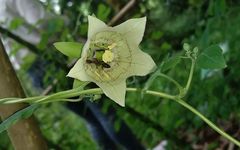 Codonopsis pilosula Information
Codonopsis pilosula Information
Codonopsis pilosula (Codonopsis pilosula) belongs to the Campanulaceae family and the Codonopsis genus.
The stem base has numerous tuberous stem scars, and the roots are often large, spindle-shaped or spindle-shaped cylindrical. The stems are twining, with flowers solitary at the branch tips, alternating with leaf stalks or nearly opposite, and have pedicels.
The corolla is superior, broadly bell-shaped, yellow-green, with distinct purple spots on the inner surface, shallowly lobed, and the lobes are triangular; the stigma has white bristles. The capsule is hemispherical at the bottom and short-conical at the top.
This species is widely distributed and includes several varieties, with the twining Codonopsis distinguished from the original variety by its smaller leaves.
The hairy Codonopsis differs from the original variety in that the calyx lobes are large, nearly equal in length to the corolla. The main difference of the smooth-flowered Codonopsis is that this variety is nearly smooth and hairless.
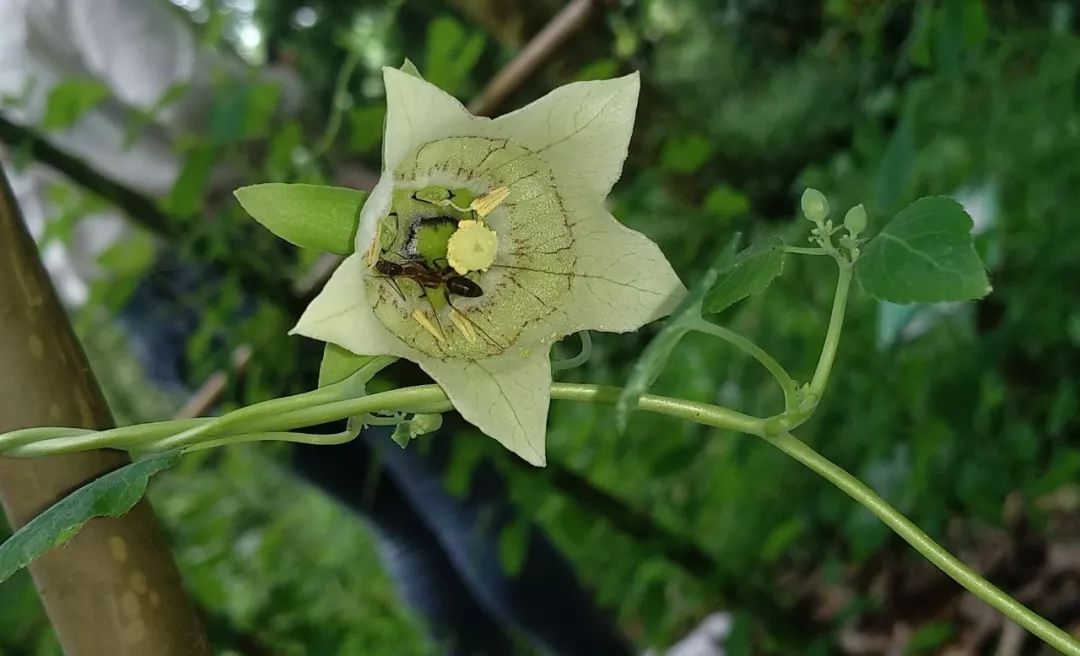
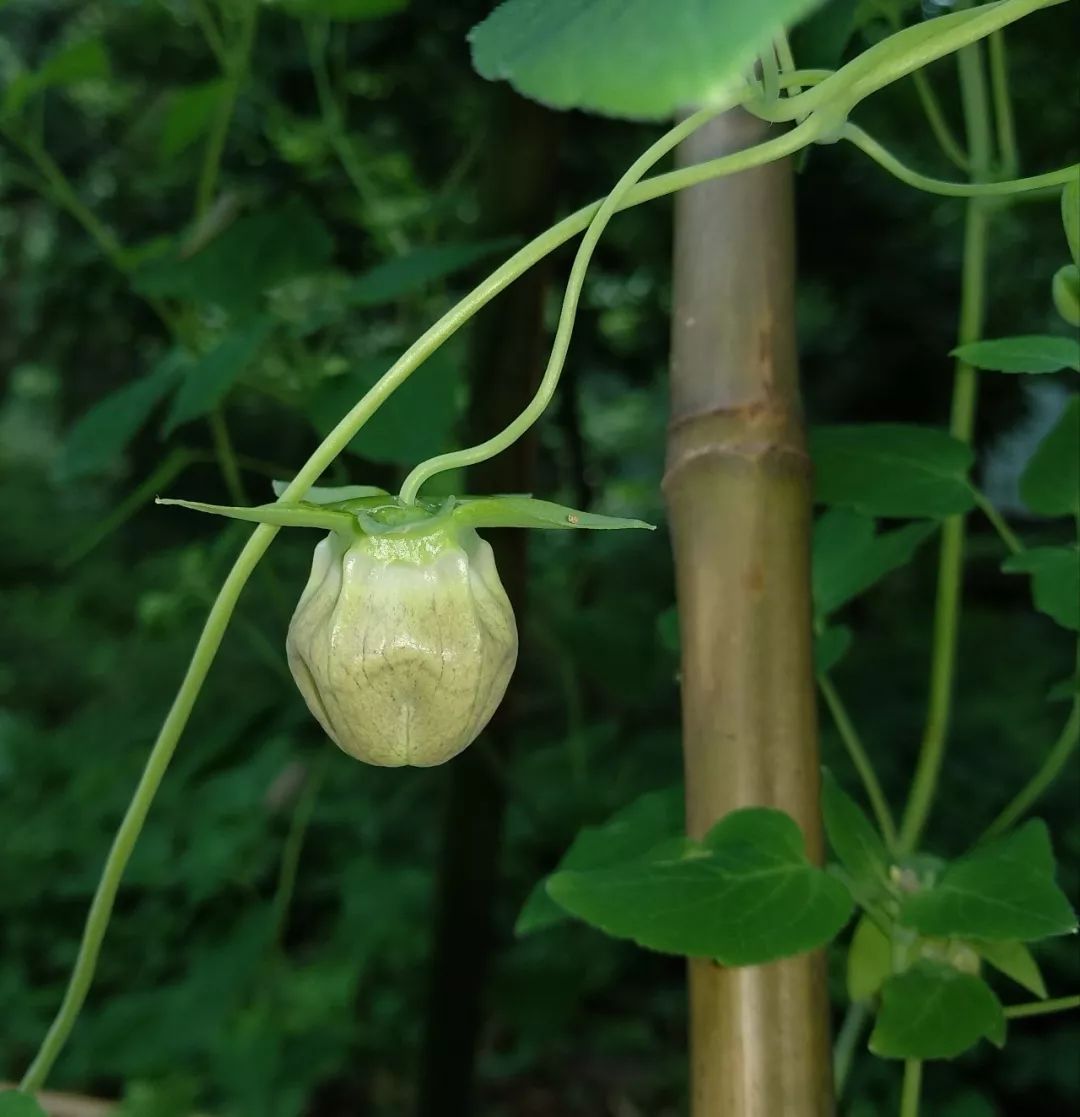
 Introduction
Introduction
The Codonopsis pilosula mentioned in this article was encountered at the Hangzhou Botanical Garden, and I particularly like these flowers that resemble little skirts. Besides being beautiful, Codonopsis pilosula is also a commonly used medicinal material; let’s explore its uses.
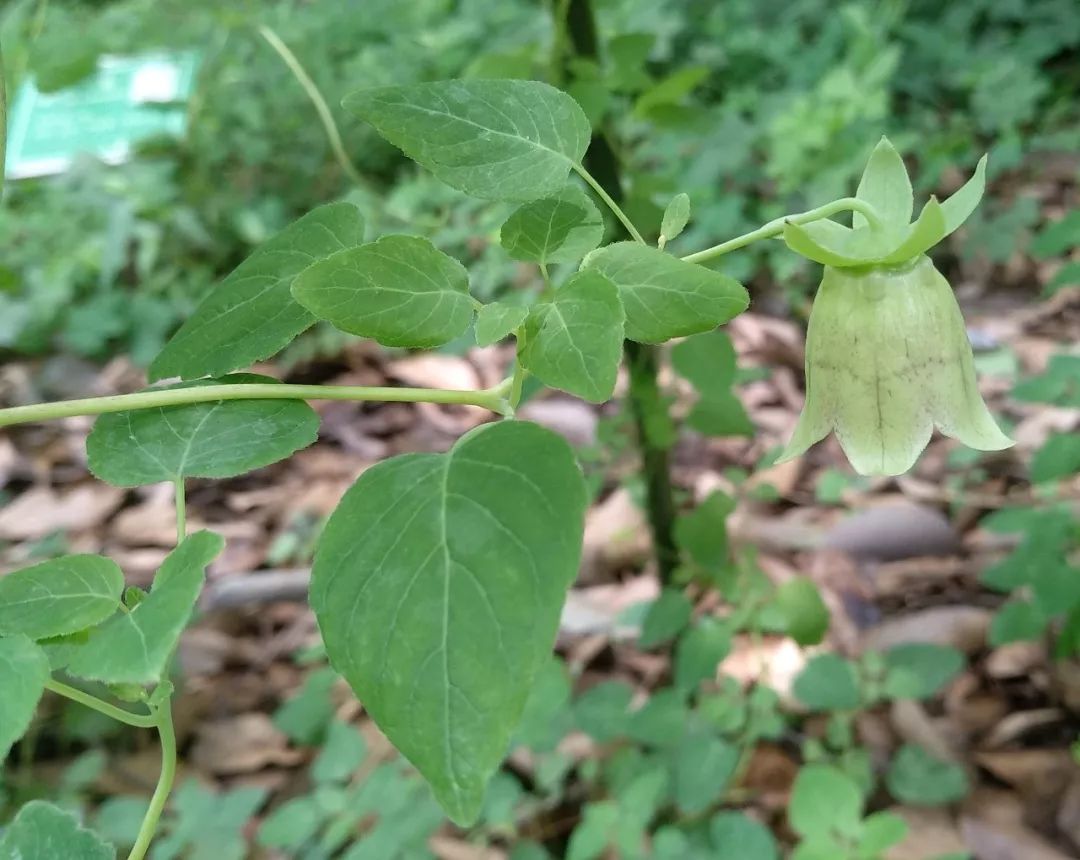
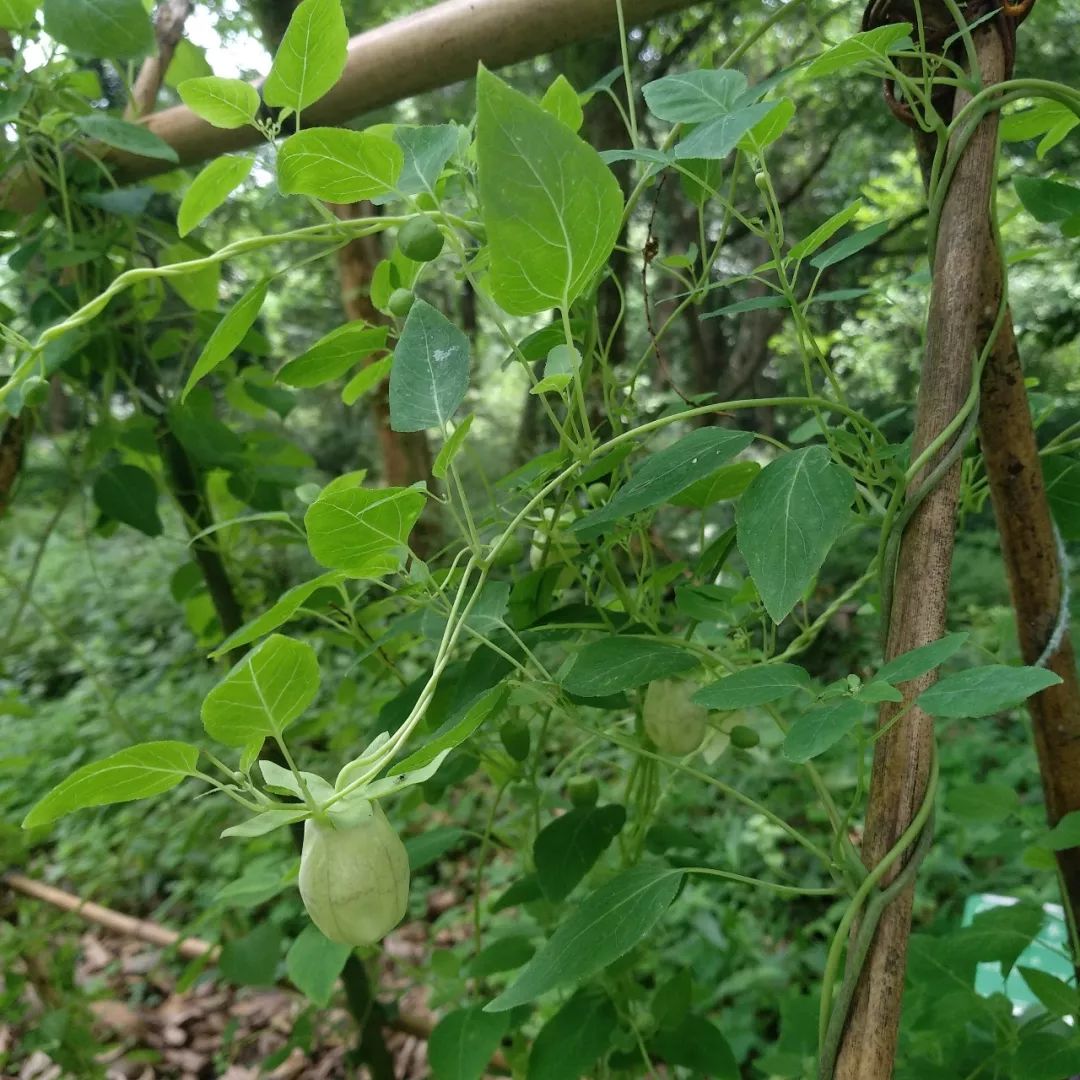
 Source
Source
There are over 40 species of Codonopsis worldwide, with 39 species found in China. The authentic Codonopsis pilosula is the dried root of the Campanulaceae plant Codonopsis pilosula, smooth-flowered Codonopsis, and Sichuan Codonopsis, but roots of other species in the same genus are also used medicinally in certain regions.
Medicinal Codonopsis resources are abundant and widely distributed across the country, suitable for diverse ecological environments, mainly growing in mountainous areas, forest edges, and shrubs.
Authentic Codonopsis pilosula, smooth-flowered Codonopsis, and Sichuan Codonopsis are extensively cultivated, primarily distributed in Shanxi, Gansu, Northeast China, Hubei, and Sichuan.
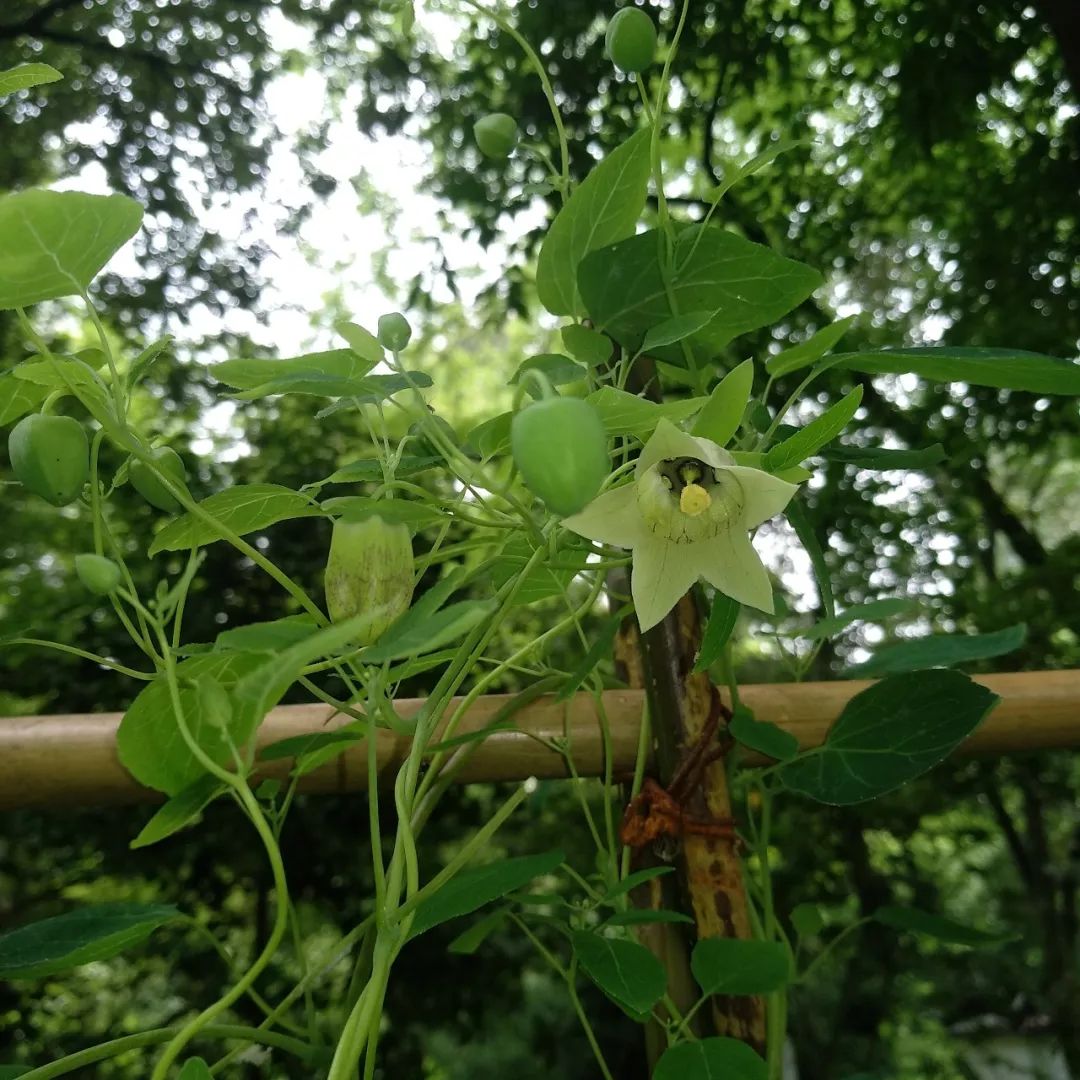
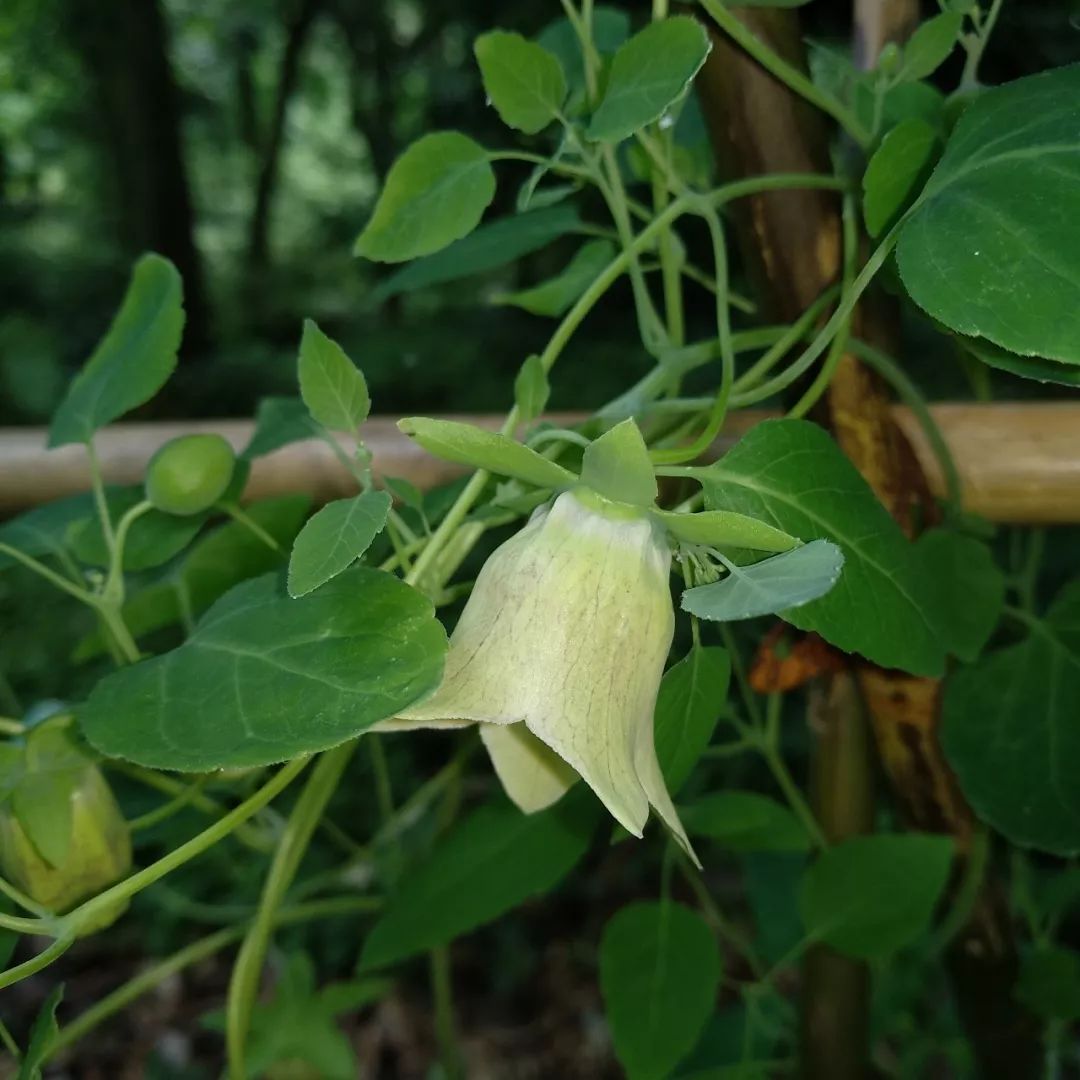
 Effects
Effects
Codonopsis pilosula is a traditional commonly used Chinese medicine, with a sweet taste and neutral nature, possessing the functions of tonifying the middle and benefiting qi, strengthening the spleen and benefiting the lungs. It is used to treat conditions such as spleen and lung deficiency, shortness of breath, palpitations, poor appetite, loose stools, weak cough, and internal heat with thirst, and is often used as a substitute for ginseng.
Codonopsis pilosula is particularly noted for its health benefits, enhancing immunity, tonifying qi, and improving insomnia.
It is also recognized for its roles in anti-tumor, anti-fatigue, anti-aging, anti-hypertension, anti-coronary heart disease, blood tonification, kidney tonification, treating indigestion, cardiovascular diseases, lowering blood lipids, and treating diarrhea.
The most frequently used combinations with Codonopsis pilosula include qi-tonifying herbs: Huang Qi (Astragalus), Bai Zhu (White Atractylodes), Gan Cao (Licorice), Shan Yao (Chinese Yam), Da Zao (Jujube), Ren Shen (Ginseng); blood-tonifying herbs: Dang Gui (Angelica Sinensis), Bai Shao (White Peony), Shu Di Huang (Rehmannia); yin-nourishing herbs: Gou Qi Zi (Goji Berries), Mai Dong (Ophiopogon); blood-activating herbs: Dan Shen (Salvia), Chuan Xiong (Ligusticum); diuretic and dampness-draining herbs: Fu Ling (Poria); astringent herbs: Wu Wei Zi (Schisandra); digestive herbs: Shan Zha (Hawthorn); exterior-releasing herbs: Chai Hu (Bupleurum); heat-clearing herbs: Sheng Di Huang (Raw Rehmannia).
It contains essential amino acids and trace elements, and people often use Codonopsis pilosula in medicinal dishes, such as Codonopsis and red date porridge, and Codonopsis and Astragalus lamb soup, etc.
At the same time, many health products have been developed from Codonopsis pilosula, such as Codonopsis paste, Codonopsis wine, Codonopsis candy, and Codonopsis tea, which enhance the body’s immunity and improve disease resistance.
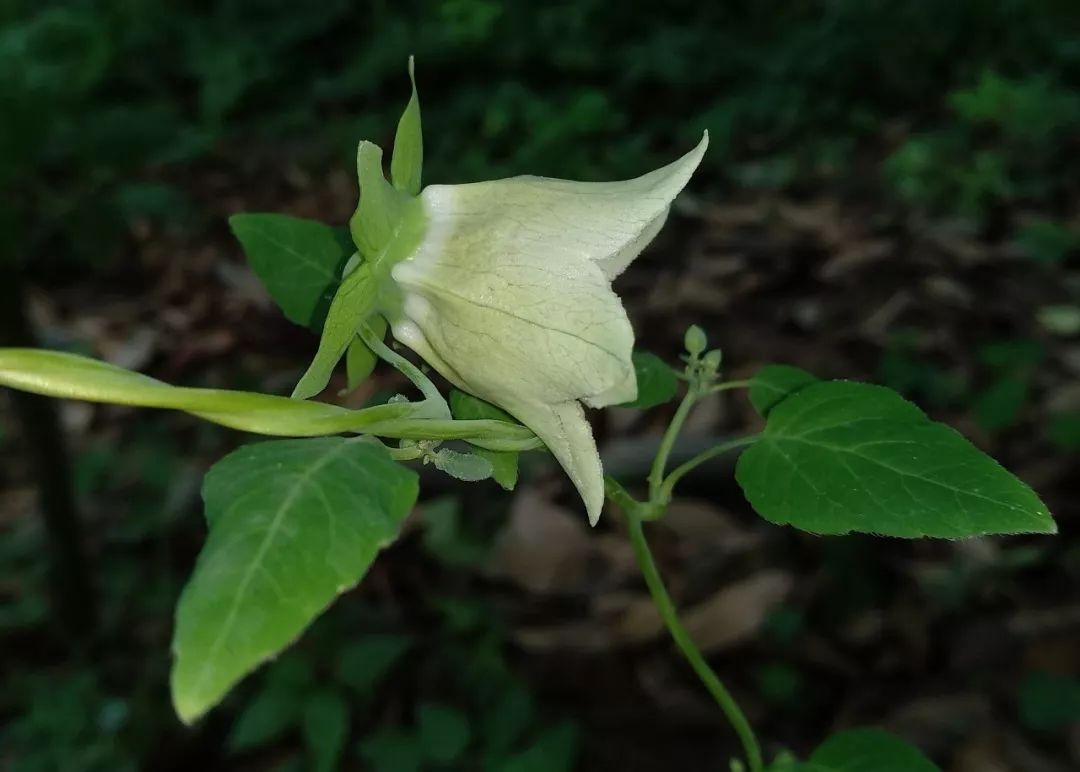
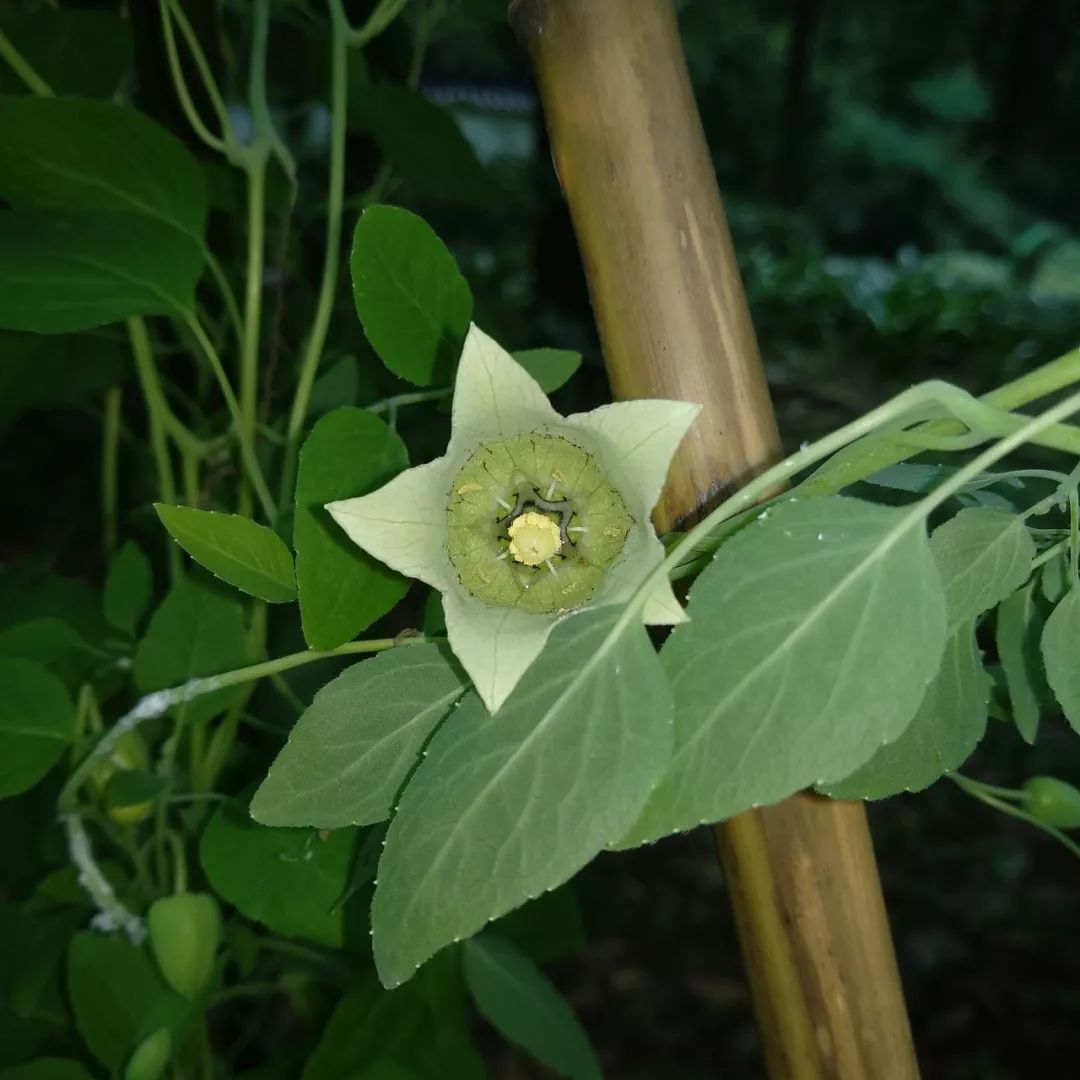
 Above-Ground Parts
Above-Ground Parts
The above-ground parts of Codonopsis pilosula contain similar chemical components to the roots, including alkaloids, saponins, steroid compounds, and volatile oils, with higher contents of total saponins, some essential amino acids, and trace elements than the roots.
Therefore, the stems and leaves of Codonopsis pilosula have high development value and can also serve as excellent feed. Mixing Codonopsis leaves with feed for piglets and laying hens has shown to improve the weight of piglets, egg-laying rates, egg production, and egg weight, while also reducing cholesterol levels.
Some medicinal Codonopsis pilosula may have superior pharmacological activity compared to authentic Codonopsis pilosula; for example, Xinjiang Codonopsis can enhance SOD activity in mouse brains, while Lu Codonopsis has no significant effect on mouse brain SOD activity.
Moreover, the immunologically active polysaccharides in Codonopsis pilosula are significantly higher in varieties such as Guanhua Codonopsis, Xundian Codonopsis, and Xinjiang Codonopsis compared to other medicinal Codonopsis.
Therefore, while emphasizing the utilization of authentic Codonopsis pilosula resources, developing other medicinal Codonopsis based on their effective components and pharmacological activities will expand the medicinal sources of Codonopsis and make the development of different Codonopsis products more purposeful.
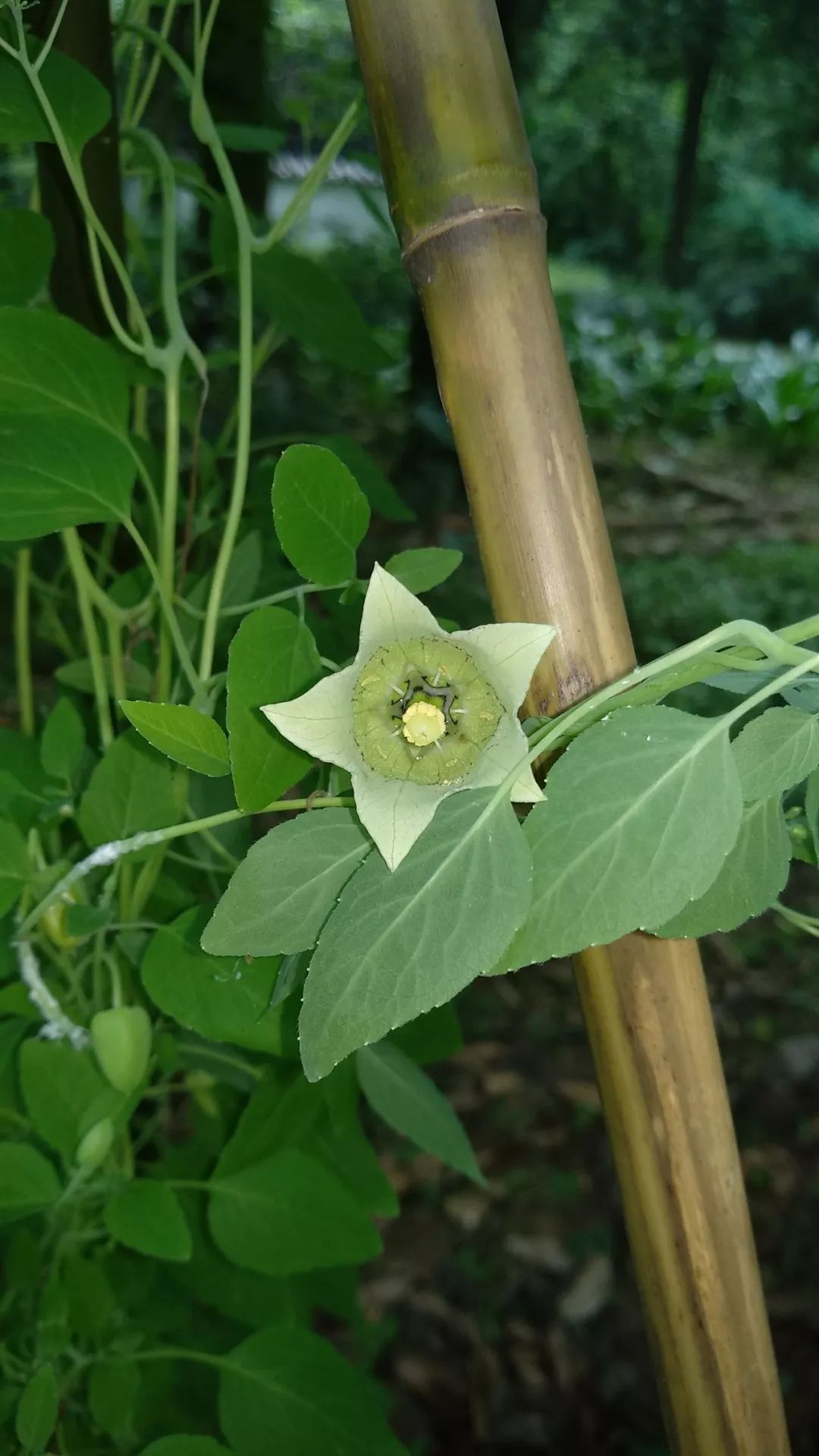

 Conclusion
Conclusion
This concludes the introduction to Codonopsis pilosula. It is said that wild boars that eat various wild grasses taste quite good, and using Codonopsis leaves as feed for pigs and chickens can improve many indicators for them. In fact, if the leaves are well studied, I believe they can also be developed for use as health vegetables.
I particularly love climbing vines, and Codonopsis pilosula is a plant I want to grow at home in the future, climbing on a fence and hanging its simple bell-like flowers. Codonopsis pilosula is primarily used for its tonifying the middle and benefiting qi effects, and it can also assist in treating other diseases when combined with other herbs.
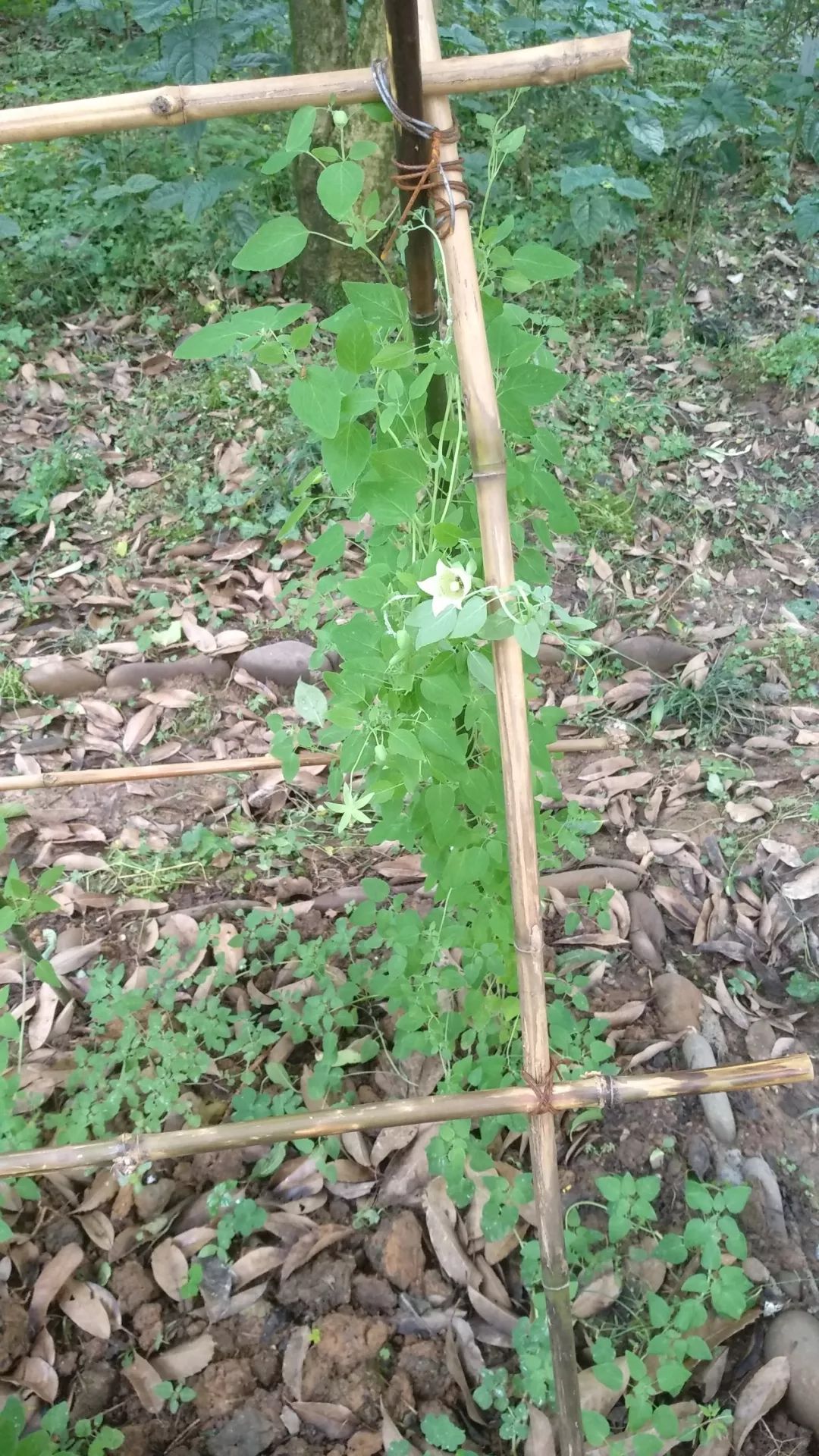
 Disclaimer
Disclaimer
Practitioners emphasize “differentiation of syndromes and treatment,” as everyone’s “syndrome” is different. The content provided in this public account is for discussion and learning purposes only and does not constitute medication advice. Please follow medical advice if needed.
 References
References
(1)Modern Advances in Research on Codonopsis pilosula Zhang Jianjun Hu Chunling Department of Biochemistry, Dingxi Normal University Gansu Dingxi 743000
(2)Overview of Research and Development of Medicinal Codonopsis Resources Bi Hongyan Zhang Liping Chen Zhen Wu Bin Institute of Medicinal Plants, Chinese Academy of Medical Sciences Beijing 100094
(3)Flora of China

